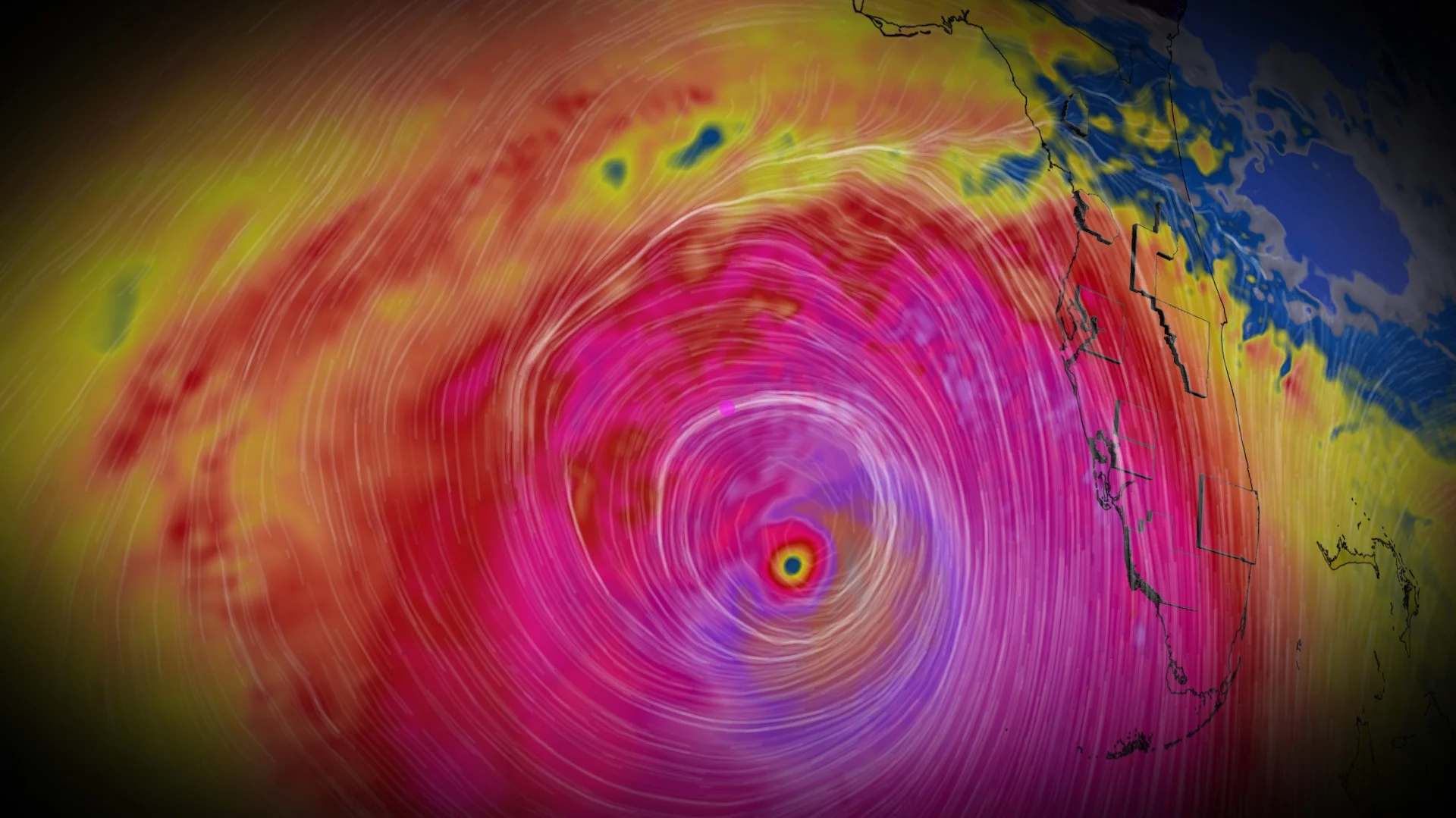
Milton's power grows as Florida residents brace for life-threatening storm
Florida residents are being warned to finish their preparations with their families now, and evacuate if ordered to, as the sprawling, dominant Category 5 Hurricane Milton is on the doorsteps to the state's western coastline, eyeing a Wednesday overnight landfall
With less than a full day before Milton's arrival, Florida residents are being urged to finish their final preparations and evacuate if instructed to do so.
Widespread hurricane and storm surge warnings line much of Florida's coastal regions, as Category 5 Hurricane Milton is forecast to remain an extremely dangerous hurricane through its landfall Wednesday overnight, most likely within 30-40 kilometres (north or south) of Sarasota, Fla. However, a Tampa Bay-area landfall can't be ruled out.
DON'T MISS: Nightmare scenario unfolding for Tampa with Milton's potential hurricane track
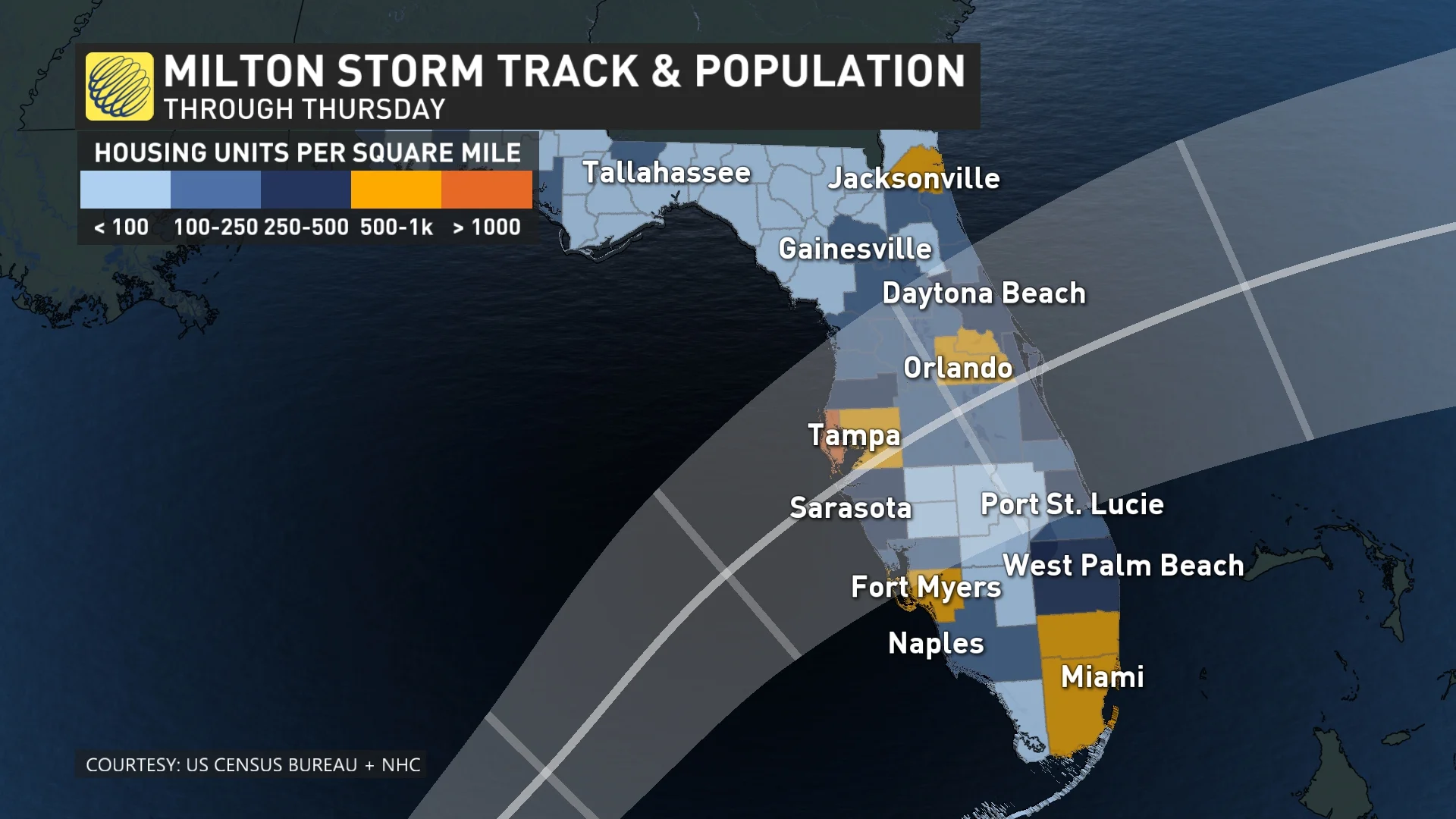
"Preparations to protect life and property should be rushed to completion," said the U.S. National Hurricane Center (NHC) in its Tuesday evening update.
More than a million people were ordered to evacuate from its path ahead of landfall. Officials have called this the largest evacuation since 2017 when Hurricane Irma hit. The mass evacuations have resulted in long lines at gas stations and major traffic jams. The storm has also forced the cancellations of flights in and out of Florida.
Current status, track and strength
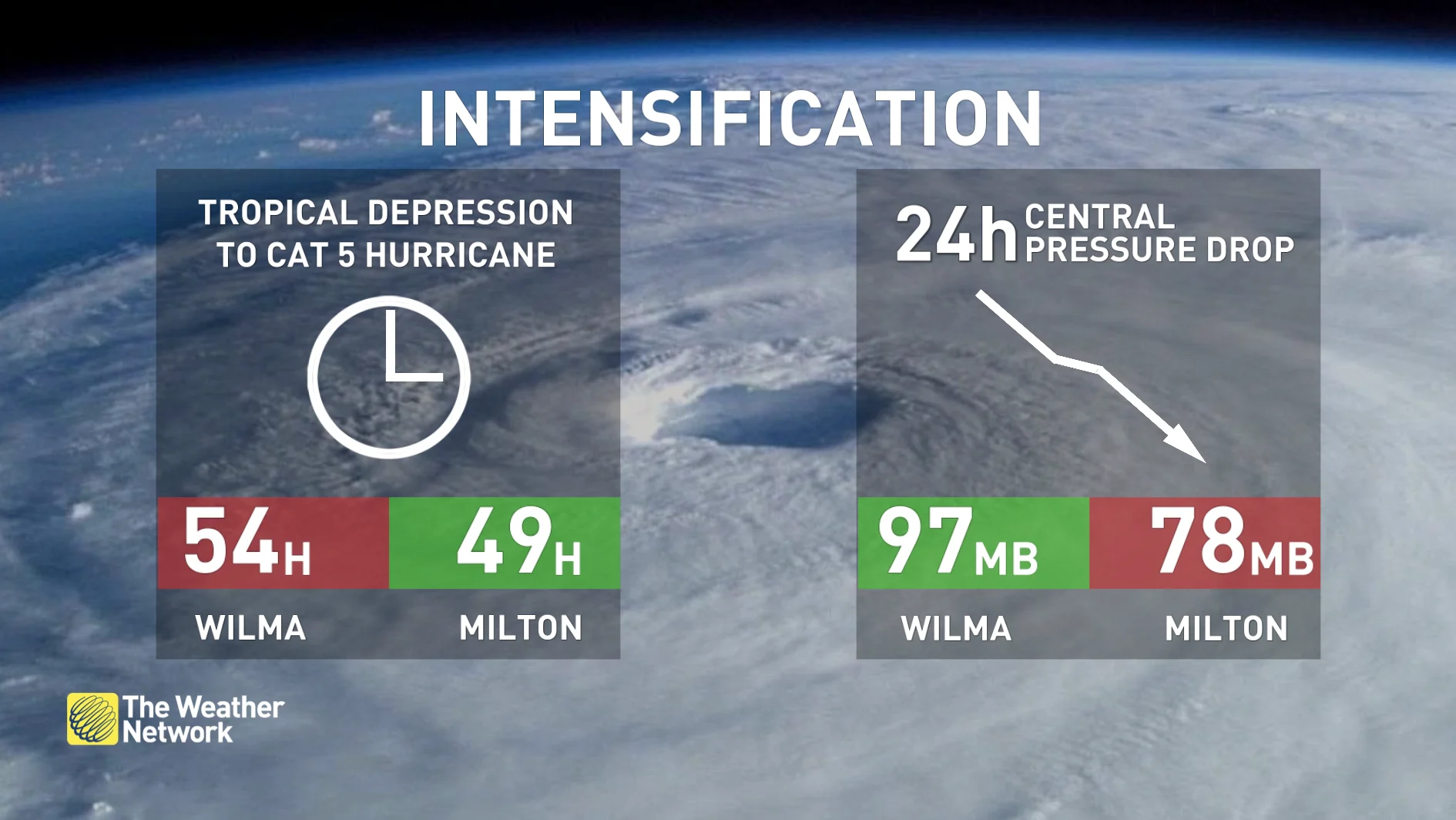
Milton quickly became one of the fastest, intensifying storms on record in the Atlantic Ocean, surging from a tropical depression to a dangerous Category 5 hurricane in just 49 hours. It is also the strongest storm on our planet for 2024 so far, beating out Hurricane Beryl.
Milton was downgraded to a Category 4 storm Tuesday morning, but has since rebounded in intensity, regaining its Category 5 status. It now boasts maximum, sustained winds near 270 km/h. On its current trajectory, a turn toward the east is expected through Wednesday.
"On the forecast track, the centre of Milton will move across the eastern Gulf of Mexico through Wednesday, make landfall along the west-central coast of Florida Wednesday night, and move off the east coast of Florida over the Atlantic Ocean on Thursday," the NHC says.
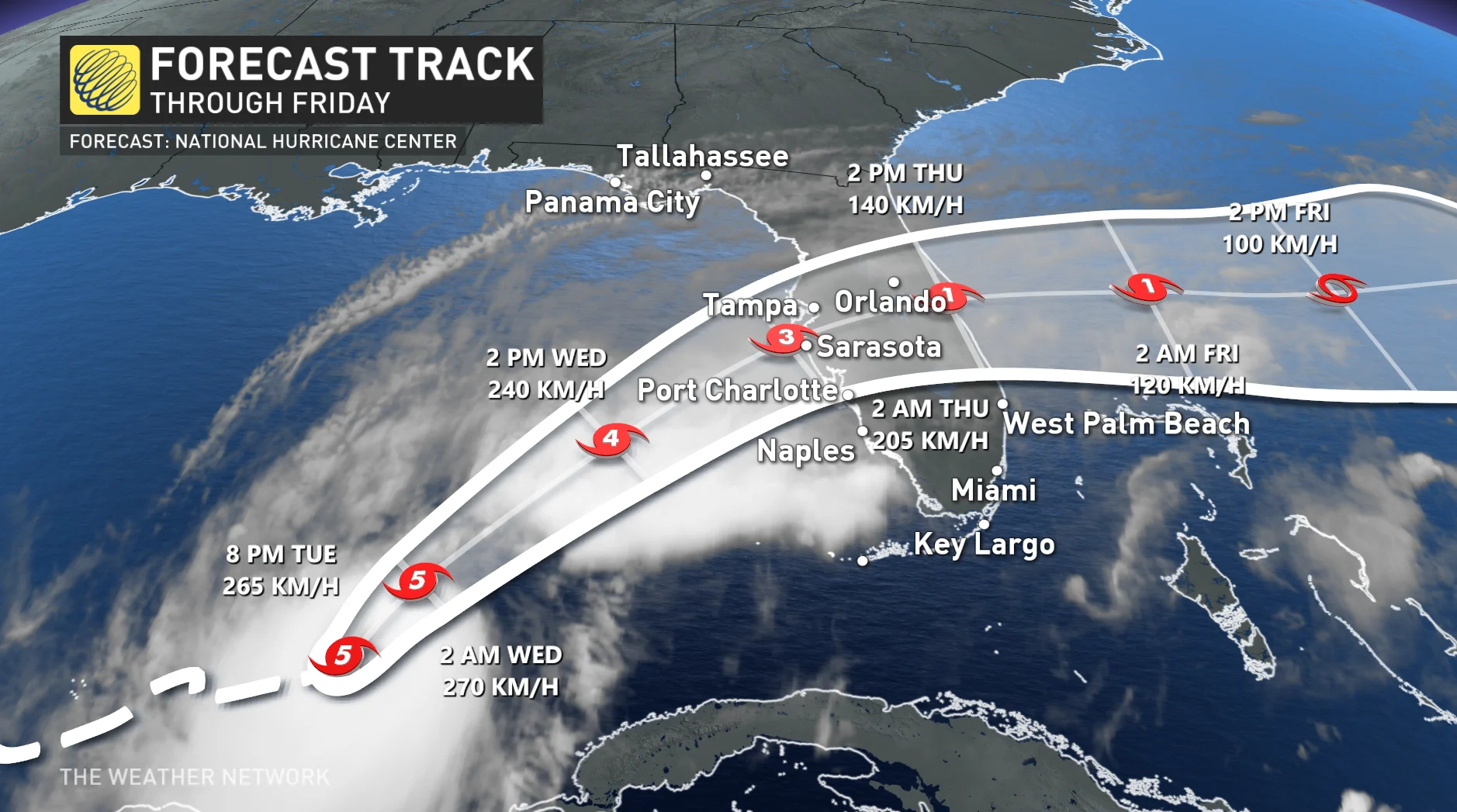
Fluctuations in intensity are likely while Milton moves across the eastern Gulf of Mexico, but Milton is expected to be a dangerous, major hurricane when it reaches the west-central coast of Florida Wednesday night, with a near-Sarasota, Fla., landfall most likely. However, a Tampa Bay-area landfall can't be ruled out out.
WATCH: N.S. crews headed to Florida for Hurricane Milton
Current alerts in Florida
A storm surge warning is in effect for Florida's west coast from Flamingo northward to the Suwannee River, including Charlotte Harbor and Tampa Bay. It's also in effect for the east coast of Florida, from Port Canaveral northward to the mouth of the St. Mary's River, including the St. Johns River. As well, it has been extended southward to Sebastian Inlet, Florida, and northward to Altamaha Sound, Ga.
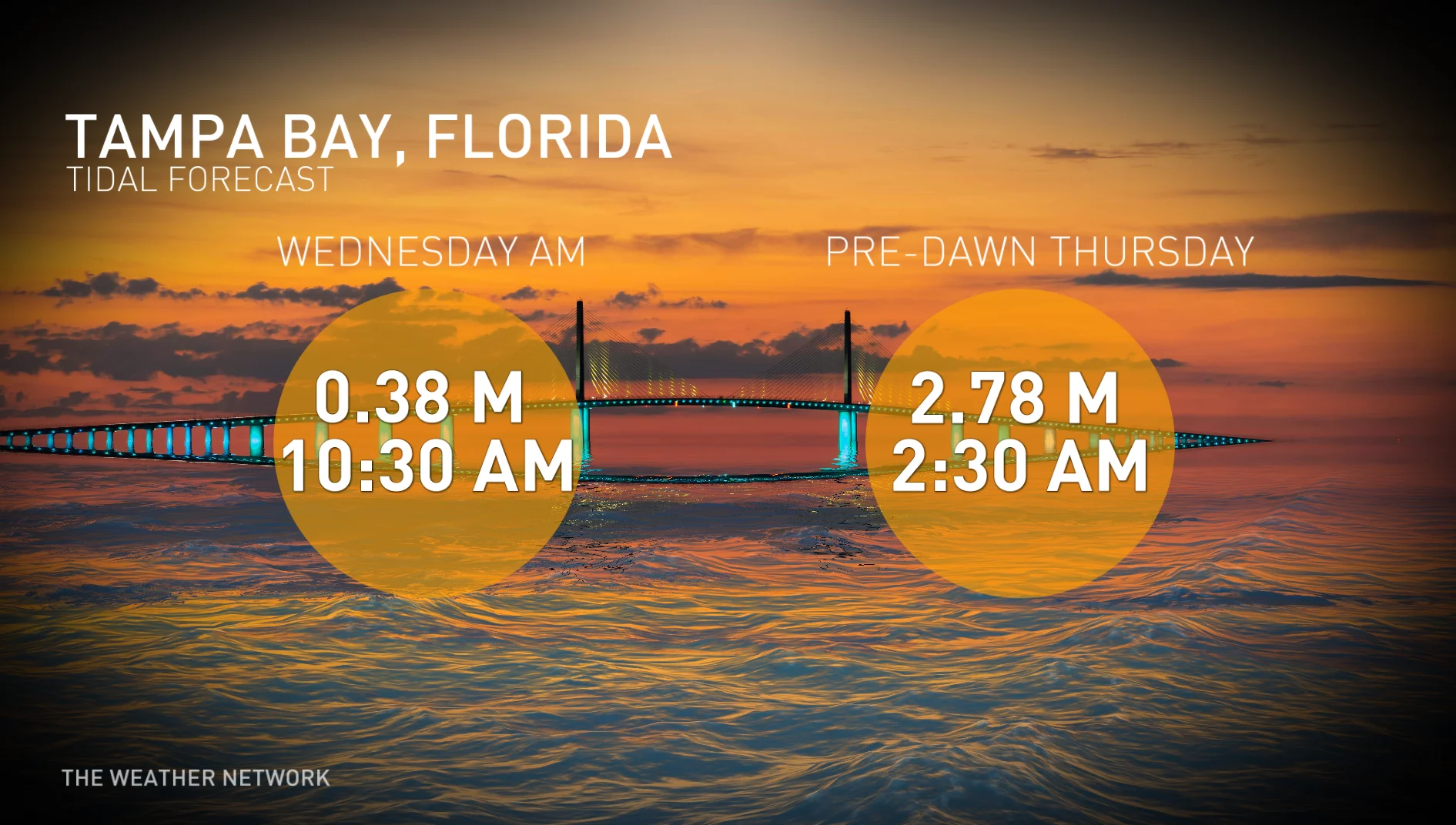
The hurricane warning has been issued from Bonita Beach northward to the mouth of the Suwannee River, including Tampa Bay, as well as from the Indian River-St. Lucie County Line northward to Ponte Vedra Beach, and extended southward to the St. Lucie/Martin County Line.
RELATED: Why Florida’s west coast is so vulnerable to storm surge flooding
Most worrisome impacts: Winds, life-threatening flash flooding and storm surge

Powerful winds in the core of the hurricane will cause significant damage near the point of landfall. Damage to homes and businesses is likely, along with long-lasting power outages in the hardest-hit communities. Power outages are expected to last for days in the storm's wake.
As well, a surge of tropical moisture collided with a stationary front parked over Florida earlier this week. This front helped wring out the excess moisture in the atmosphere, resulting in a long period of heavy rains before Milton's landfall.
Many communities throughout Florida could see 150-300+ mm of rain during this event. Some localized areas could even see up to 450 mm.
"This rainfall brings the risk of catastrophic, and life-threatening flash and urban flooding, along with moderate to major river flooding," the NHC warns.
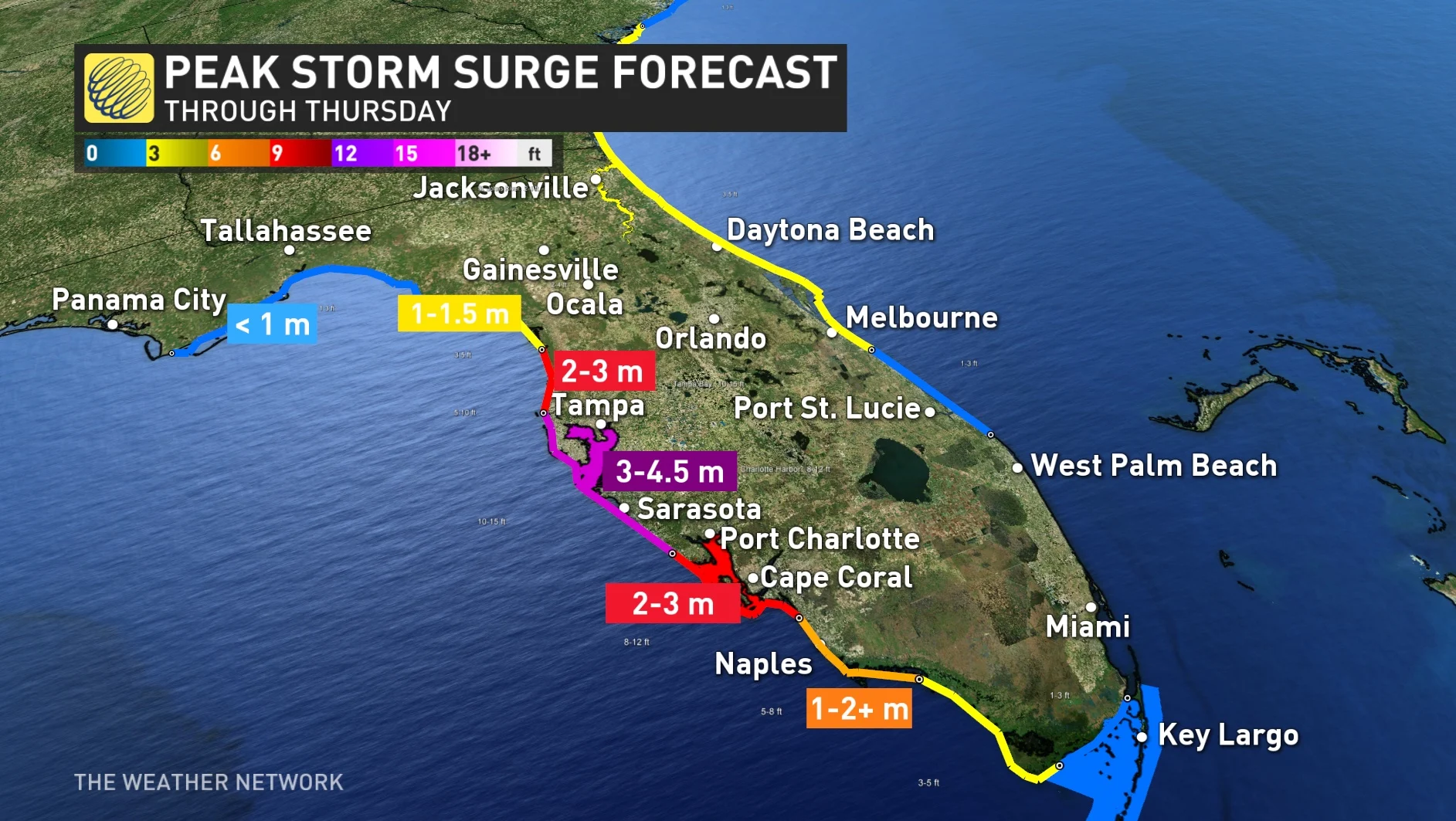
MUST SEE: Why focusing on a hurricane’s category is downright dangerous
A life-threatening storm surge is likely where the hurricane makes landfall. Florida’s western coast is exceptionally vulnerable to storm surge flooding. Even if the eye of the storm skirts the Tampa Bay area, Milton's storm surge will still be a very dangerous situation for the region. It will be the most life-threatening part of the storm as high waves funnel into narrow bays.
In Tampa Bay, water heights could reach 3-4.5 metres above ground. The deepest water will occur along the immediate coast near and to the south of the landfall location, where the surge will be accompanied by large and dangerous waves.

As with any landfalling tropical system, tornadoes will also pose a threat to the Florida Peninsula as Milton makes landfall this week. Stay alert for tornado watches and warnings throughout the state. Tropical tornadoes can happen quickly with reduced tornado warning lead time.
A major hurricane hasn't directly hit the Tampa Bay area in living memory. The last major hurricane to strike the region occurred back in 1921.
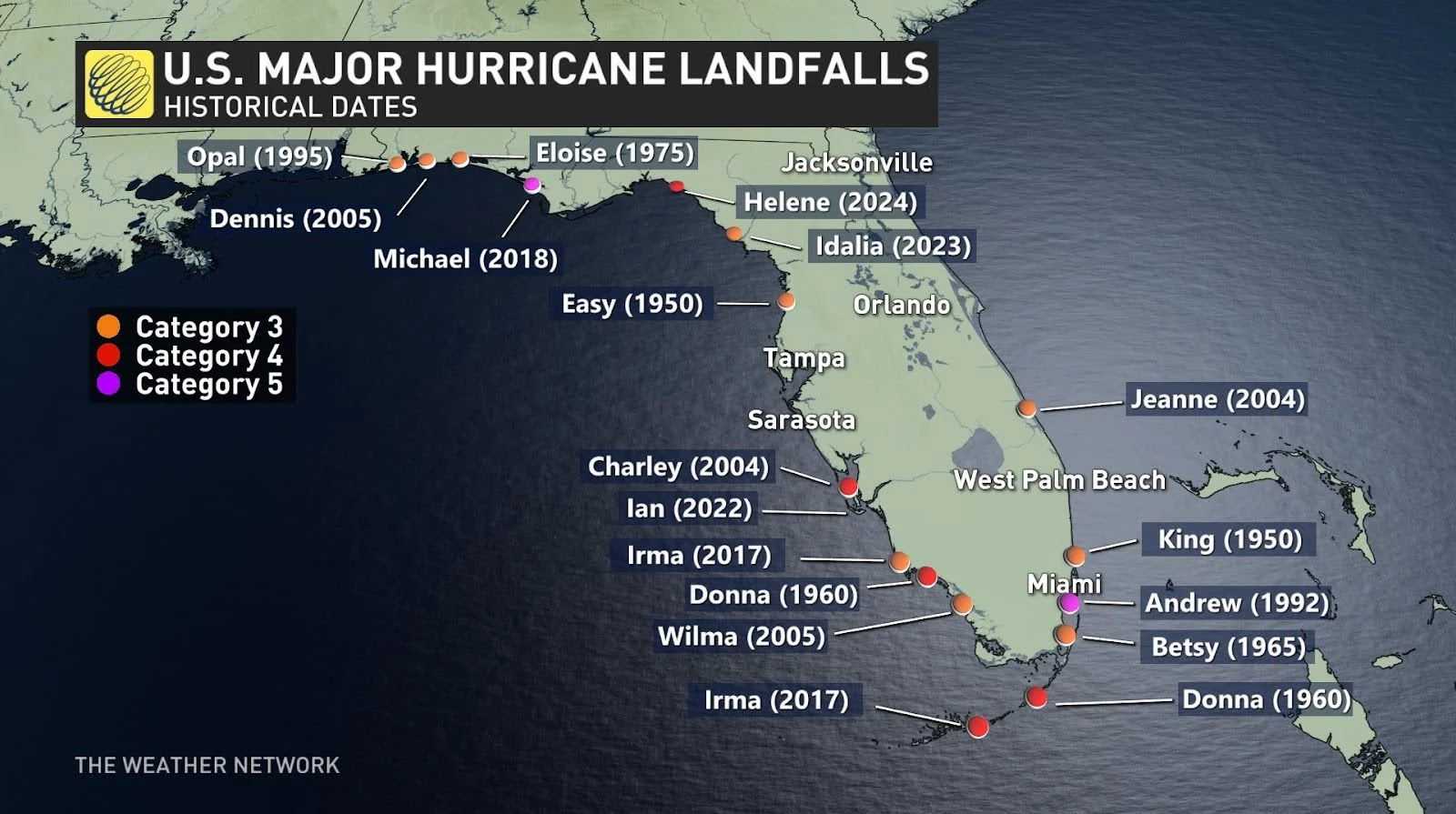
Milton will be an extraordinarily high-impact, life-threatening, if not, a catastrophic event, with a far-reaching power outage potential, that in hardest hit areas will take months to clean up, or years to rebuild.
WATCH: Florida couple evacuates home ahead of Hurricane Milton
With files from Reuters.











